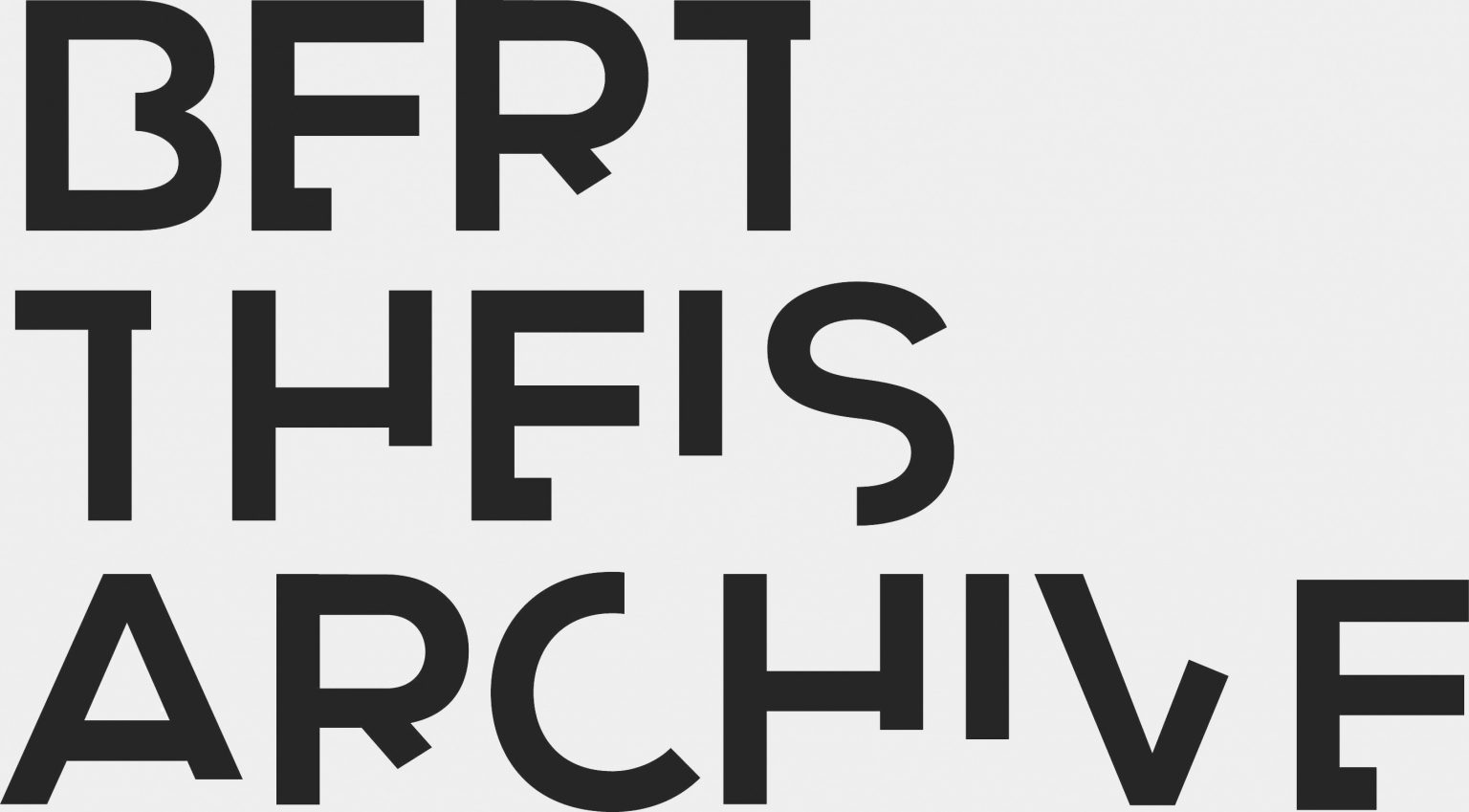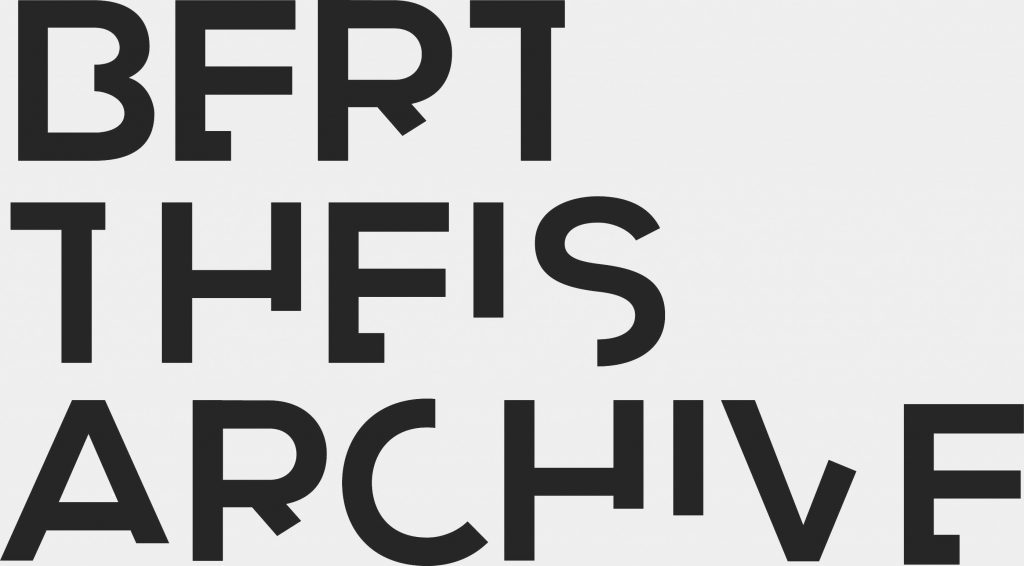For Bert:
An Essay on Being-Under and Being-Around
The coexistence of art and philosophy, the concatenation of social and conceptual machines, the combination of art and thought that operated and still operates in and around Bert Theis is not limited to a practice of speaking, discussing, and philosophizing as communication, or to the artist’s more or less obvious knowledge of philosophy, ancient or current. Rather, it is a mode of subjectivation that also has to do with invention and disobedience. And it is not limited to an individual but spreads virally, in a milieu of resistance, an ecology of care: artistic-conceptual work from the surround, the surroundings, in and under and on the machinic middle – it is a “dissemblage” that nevertheless comes together, conjoins, condenses in a single figure, in Theis and his scandalous philosophical-artistic activism, beyond moralizing and standardizing positions, always as a divisive attitude, posture, mindset, behavior. And the cogs of the conceptual machines and the social machines interlock: the invention of concepts intermeshes with the affect machines of art.
“The philosopher is the concept’s friend” (1) and “philosophy is the discipline that involves creating concepts” (2) wrote Gilles Deleuze and Félix Guattari in What Is Philosophy? The field of philosophy is not concerned with the interpretation of preexisting and suprahistorical concepts but with their invention and displacement, which is why creativity is not restricted solely to “the sensory and the arts” (3). It is the interaction of art and philosophy that proves inventive in different ways. They conjoin in Theis’s works without ever blending into each other, meeting “at this point: the constitution of an earth and a people that are lacking as the correlate of creation.” (4)
There are the works with philosophical references in their very titles, from Philosophical Platform (1997) to Sandwiches. However, the correlation becomes even more obvious in the larger number of pieces by Theis that can be defined as “text works” (the name the artist himself used5). From the early newspaper insert Non partecipare all’inquinamento iconografico (1994–96) and European Pentagon, Safe & Sorry Pavilion (2005), for the Luxembourg Presidency of the Council of the European Union, to his Jean-François Lyotard appropriation It’s not up to us to supply reality (2004), Theis experimented with misappropriations of philosophical statements, ambiguous forms of textual performance, (un)readability, and unexpected de- and recontextualization. At the same time, in these textual and conceptual works, the texts, writings, statements, and words are already shifting in the physical and the semantic space—they are reinvented, driven by the desire to interlink with the social machines.
“Language is a rather imperfect means of communication” (6) wrote Theis in his cursory thesis on his text work The True Artist… (2003). His use of the word imperfect is not to be understood merely as a negative comment but, in the first instance, rather literally as an indication of the openness and fundamental inconclusiveness of language – specifically, the language of the text works themselves. Beyond that, borrowing from Deleuze and Guattari, we can assert that philosophy has as little to do with communication as art: “Philosophy does not contemplate, reflect, or communicate.” (7) While philosophy presents itself as the “continuous creation of concepts” (8) “art thinks through affects and percepts” (9).
While the text works, which are predominantly indebted to the traditional art context, try to open up meaning by way of paradoxical statements, the political work around Isola—the district of Milan in which Theis’s work has unfolded over the last two decades—also seems to follow a movement of disambiguation. Through social practices in a frayed space that could no longer be reduced to art, he attempted to draw lines and be drawn by them, without renouncing the variety of possible traits. Here, in this district threatened by speculation and gentrification, the focus could no longer be solely on encryptions and deciphering, or their versatile interpretations. Increasingly, a dissembling work with concepts came to the fore, which interlinked with the social machines and operated within them. In Isola, around 2000, in the midst of brutal gentrification processes, an irrepressible and irresistible instituent practice emerged, and forces of resistance developed that took on a variety of forms—and just as many different names.
Take, for instance, the invention of the “dirty cube” as a term and practice. In an environment such as the Italian art scene—which attaches great importance to the cleanliness of the walls of its white cubes, and which seeks to drain, devastate, unravel, and separate the concatenation of social and artistic machines—it seemed natural to adopt strategies of pollution, depurification, and contamination. For example, introducing artistic objects into the occupied spaces of the Stecca (10) not only turned them into site-specific works, conceptually speaking, but also blurred the boundaries between the artwork and the architecture of the occupied space, thus opening up strategic spaces for action. But the contamination of the white cube also took place more generally through the activation and combination of artisan, craft-related, artistic, urban planning, and social practices in the everyday affinity of the occupied factory. At the same time, the dirty cube anticipated another practice of “environmental pollution,” which in the context of the gentrification of Isola, made an even more important contribution than the actions against the compulsive cleanliness of the art market.
The paradigm of the creative industries is less concerned with delimitation than with the constant modulation and valorization of invention. The notorious term for this economic form of servicing is etymologically close to cube, or even seems to precede it: incubator—or, as Stefano Boeri, the wolf of gentrification in artistic-architectural sheep’s clothing, called it, “incubatore dell’arte” (“art incubator”). Thanks to a constant turnover of participants, to a strictly limited temporary use of and short-term involvement in a nonsituated space, these incubators ensure that their actors do not get in the way of economic and political interests, while simultaneously contributing to the financial appreciation of the area by providing a constant stream of new creative projects in line with the cultural affinity of the educated, middle-class neobourgeoisie. No wonder then that in the plastic socialities of the globally proliferating art incubators nothing can be created, nothing can be invented, nothing can be de- or recomposed as a dissemblage. In this cultural realm of machinic capitalism, the concepts and practices in which Theis took part were always one step ahead, and their little thorns sometimes hurt when swallowed. The “earth that is lacking” is the territory of Isola, the re- and deterritorialization of the various stages of the resistance practices that were tried and tested there for almost two decades. The “people lacking” refers to the sociality of Isola, never seen as a uniform group or along hierarchical grids, but rather as a social envelope, a frayed being-around, a disobedient surround.
And there came a time to oppose the valorization both cunningly and offensively, to draw clearer lines – lines of flight, of struggle, of invention. The new term for it was also quickly found: beyond the site-specificity of the dirty cube, Isola Art Center developed into a practice, especially after the eviction of the Stecca, works that were termed “fight-specific” rather than site-specific. These works were no longer involved in and commenting on the locations in which they took place, but they invoked artistic practice as a means to engage in the specific struggles affecting a given place.
Theis himself described the line of flight after the destruction of Stecca with the following words: “A center for art and for a neighborhood is not a building but an idea, a program. Whoever thought they were destroying the Isola Art Center by destroying the building in which we worked from 2003 to 2007 was wrong. The center dispersed but is still alive. The places for exhibitions and meetings are disseminated throughout the Isola neighborhood, hosted by associations, shops, a restaurant, piazzas, shop-front roll down security doors” (11). The daily struggle of its subsequent iteration as a “homeless art center,” which from 2007 onward operated in the diaspora, occupying Isola’s shops, bookstores, community centers, and roll down security doors, was characterized by a fierce transversality that refuted the imperatives of obedience, participation, and (self-)domestication common to the incubators of the creative industry.
This transversality of struggle, repeatedly contaminating its environment, is also an ecology of care. Not least, this terminology clarifies the function that Theis claimed for himself as a cog in the social machine: instead of staging concern as the paternalistic cura of the curating curator, as a narcissistic highlighting and underlining of the curator-person and cementing of social hierarchies, he uses his practice as an enveloping, surrounding, caring sociality.
Theis’s affection for the title of subcurator may find its origins in the work of the Zapatista subcomandantes. Still, the path that leads from the subcommander to a subcuratorial component of care-ecology in the barrio is a winding one. This sub- is not simply “under” something, it is not a hierarchical category, it is the sub- of the surround, the environment, the milieu – dangerous, unidentifiable, transpersonal. Subcurating is not the task of an individual but a question of being-around, of preserving the environment together, of multiplying, spreading and differentiating the conditions of care. And it is not just caring for certain people, but caring for and with things, bodies, machines—more specifically, flying machines, toward the end of Theis’s life—and it is also caring for and with the ghosts who time and again will be with us, around us, and among us.
Gerald Raunig (2019)
Gerald Raunig works at the eipcp (European Institute for Progressive Cultural Policies) in Vienna as one of the editors of multi-lingual publishing platform transversal texts, and at the Zürcher Hochschule der Künste in Zurich as Professor of Philosophy. His books have been translated into English, Serbian, Spanish, Slovenian, Russian, Italian, Dutch and Turkish. Recent books by Raunig in English include: Art and Revolution. Transversal Activism in the Long Twentieth Century, 2007; A Thousand Machines, 2010; Factories of Knowledge, Industries of Creativity, 2013; DIVIDUUM. Machinic Capitalism and Molecular Revolution, Vol.1, 2016, all translated by Aileen Derieg and published by Semiotext(e)/MIT Press.
- Gilles Deleuze and Félix Guattari, What Is Philosophy?, trans. Hugh Tomlinson and Graham Burchell (New York: Columbia University Press, 1994), 5.
- Ibid.
- Ibid.
- Ibid., 108.
- Josée Hansen, “Extensions du domaine de la lutte,” interview with Bert Theis, d’Lëtzebuerger Land, August 26, 2011, 19.
- Bert Theis, “The True Artist Never Tells the Truth,” Musée info, bulletin d’information du Musée national d’histoire et d’art, no.17 (December 2004): 25.
- Deleuze and Guattari, 6.
- Ibid., 8.
- Ibid., 66.
- See Bert Theis, “The Three Strategies of Isola dell’Arte,” in Fight-Specific Isola: Art, Architecture, Activism, and the Future of the City (Berlin: Archive Books, 2013), 96–100.
- Bert Theis, press release for the exhibition Bert Theis: Building Philosophy, translated by the author from the Italian original (Prato: Centro per l’arte contemporanea Luigi Pecci, 2009).
Published in
Mudam Luxembourg, ed. Bert Theis. Building Philosophy – Cultivating Utopia, Milan: Mousse Publishing, 2019 (English/French)

